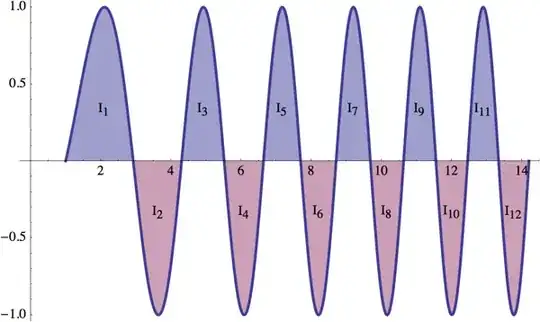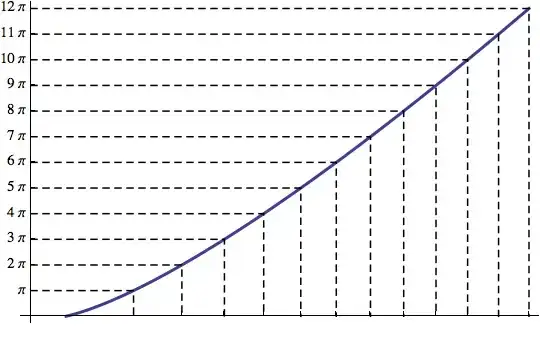Why does $\int_1^\infty \sin(x\log x)\,dx$ converge?
I haven't got a clue about where to being with this, any help would be appreciated.
Why does $\int_1^\infty \sin(x\log x)\,dx$ converge?
I haven't got a clue about where to being with this, any help would be appreciated.
Let's take a look at a graph.

It appears that the graph oscillates up and down over the $x$-axis and that the labeled areas are decreasing to zero from left to right. In fact, it's not hard to prove these statements, namely
$$\int_1^\infty \sin(x\log x)\,dx = \sum_{n=1}^{\infty} (-1)^{n+1} I_n$$
and that $\lim_{n\rightarrow\infty} I_n = 0$ with $0<I_{n+1}<I_n$. This boils down to the fact the area $I_k$ is bound on the left by the $k^\text{th}$ of $sin(x\log(x))$ and on the right by the next root. Furthermore, these roots are exactly the spots where $$x\log(x) = k\pi,$$ for some integer $k$. The fact that the distance between consecutive roots tends to zero boils down to the fact that $x\log(x)$ is an increasing, convex function.

But this answer says yes! Looks like W|A is wrong on this one?
– Bennett Gardiner Jan 29 '14 at 13:45